- A Brief History Of Irish...

A Brief History of Irish Travellers, Ireland’s Only Indigenous Minority

After a long battle, Irish Travellers were finally officially recognised as an indigenous ethnic minority by Ireland’s government in early March 2017. Here, Culture Trip takes a look at the origins of the Irish Travelling community and how the historic ruling came about. At the time of the 2011 census , there were around 29,500 Irish Travellers in the Irish Republic , making up 0.6% of the population. The community was found to be unevenly distributed across the country, with the highest number living in County Galway and South Dublin. Although – as the name suggests – Irish Travellers have historically been a nomadic people, the census showed a majority living in private dwellings.

Throughout Irish history, the Travelling community has been markedly separated from the general Irish population, resulting in widespread stereotyping and discrimination. The same year as the census, a survey conducted by Ireland’s Economic and Social Research Institute found that Irish Travellers suffer widespread ostracism; this and other factors have been shown to contribute to high levels of mental health problems among Irish Travellers. Indeed, the 2010 All Ireland Traveller Health Study found their suicide rate to be six times the national average, accounting for a shocking 11% of Traveller deaths.

Through the 2011 census, members of the Travelling community were also found to have poorer general health, higher rates of disability and significantly lower levels of education as compared to the general population, with seven out of 10 Irish Travellers educated only to primary level or lower.

Because of a lack of written history, the exact origins of the Irish Travelling Community have been difficult to clarify. Although it had been hypothesised, until relatively recently, that Irish Travellers may be linked to the Romani people, a genetic study released in February of this year revealed this connection to be false.

The study found that Travellers are of Irish ancestral origin, but split off from the general population sometime around the mid-1600s – much earlier than had been thought previously. In one widely quoted finding, the DNA comparisons conducted in the course of the research found that while Irish Travellers originated in Ireland, they are genetically different from ‘settled’ Irish people, to the same degree as people from Spain.

The results of the study, conducted by the Royal College of Surgeons in Ireland, University College Dublin, the University of Edinburgh and the Hebrew University of Jerusalem, contributed significantly to Irish Travellers being officially designated an ethnic minority, defined as a group within a community with different national or cultural traditions from the main population.

Speaking to RTE on the day of the ruling, former director of the Irish Traveller Movement Brigid Quilligan said, ‘We want every Traveller in Ireland to be proud of who they are and to say that we’re not a failed set of people. We have our own unique identity, and we shouldn’t take on all of the negative aspects of what people think about us. We should be able to be proud and for that to happen our State needed to acknowledge our identity and our ethnicity, and they’re doing that today.’

Become a Culture Tripper!
Sign up to our newsletter to save up to $1,058 on our unique trips..
See privacy policy .

21 Must-Visit Attractions in County Kerry, Ireland

The Best Private Trips to Book For Your English Class

History and Culture on an Ireland Road Trip

Must-Visit Attractions in Ireland

Top Tips for Travelling in Ireland

These Are the Places You Need to Go on St Patrick’s Day

The Best 26 Things to See and Do in Limerick, Ireland

The Best Coastal Walks in the World

Most Beautiful Towns, Villages and Hotels in Ireland

The Best Hostels to Book in Ireland for Every Traveller

The 7 Most Beautiful Towns in County Kerry, Ireland

Off The Beaten Path: 13 Unusual Things to Do in Ireland
Culture Trip Fall Sale
Save up to $1,058 on our unique small-group trips! Limited spots.

- Post ID: 1176219
- Sponsored? No
- View Payload
Who are the Travelling Community in Ireland?
Learn more about the history, traditions and challenges faced by the Travelling Community
Fact checked by experts and reviewed by young people.
Written by: spunout
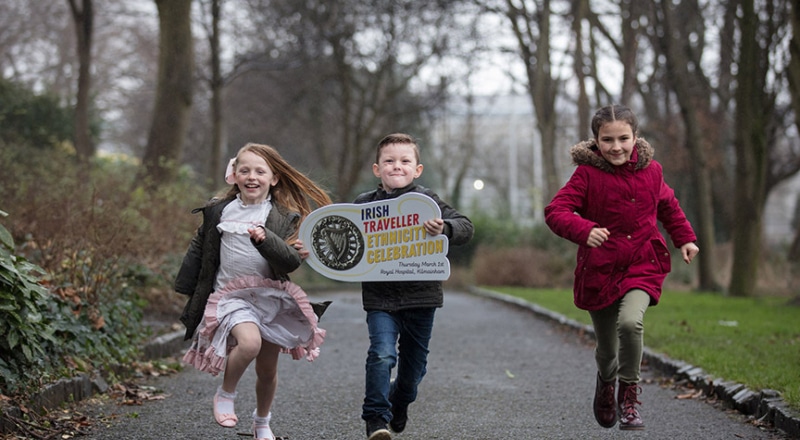
The Travelling Community is an Irish ethnic minority group. Travellers traditionally lived nomadically, moving from place to place, and followed their family routes around a region in Ireland looking for work and visiting fairs. Over the past few decades Irish Travellers have been forced off the roads due to a number of reasons including government policies, laws causing shortages of stopping places or halting sites, and fairs ceasing to trade. Traveller families are now less able to travel and many have been moved into halting sites and houses around the country.
Are Irish Travellers an ethnic minority?
A recent study based on DNA testing, by the Royal College of Surgeons and Edinburgh University suggests that Irish Travellers emerged as a distinctive Irish group at least 12 generations or 360 years ago, around the year 1657. Many individual Traveller families will also have their own ‘origin’ theories or family stories as to how they came to travel on the road.
On the 1st of March 2017, after 25 years of campaigning, Irish Travellers were recognised as an ethnic minority group by the Irish government. Irish Travellers are indigenous Irish people, but are a distinctive group within the general population, and ethnically different due to a shared history, traditions, culture and language, among many other elements.
Has ethnic recognition helped the Travelling Community?
Ethnic recognition should in theory help Travellers to protect their culture and traditions, and provide extra supports in the areas including education, accommodation and health. But the Travelling Community continue to face discrimination in many aspects of life including accessing employment, healthcare, housing and education. A National Framework for Traveller and Roma Inclusion (NTRIS) is currently in development tackle these issues. So far little has changed but the Travelling Community are keeping pressure on the government to improve the lives of Irish Travellers in Ireland.
What are the traditions of the travelling community?
Trades people.
Traditionally, tin-smithing was widely practised among Travellers, who could hand craft many different kinds of pieces in tin or copper. Mugs, buckets, coal scuttles and churns are only a small selection of the various items that a Traveller could make. Travellers also took up seasonal work for farmers, such as fruit and potato picking. This independent spirit is a strength and source of pride by many people in the community and is carried on to this day in the form of market stalls, gardening businesses, online selling and revamping furniture, to give only a few examples.
Sewing and clothes making
Traveller women would traditionally make something called a ‘ beady pocket ’, which is a kind of handmade handbag worn around the waist, usually under an apron. The pocket would hold money and important items for the family. The flap on the front would be highly decorated with hand-stitching, buttons, beads and other trinkets which were exchanged or gifted between other Traveller women. They could act as a ‘memory box’ for when the women last met, or mark an important occasion. Many Traveller women still enjoy personalising their clothing and accessories, even if they no longer make the beady pockets.
The Travelling Community also have a long tradition of playing music. Uillean pipers Felix and Johnny Doran influenced pipers across the globe on the Irish traditional music scene. Paddy Keenan is another example of this tradition. John Doherty and his family also regularly performed around Donegal, playing a unique blend of fiddle tunes. Finbar Furey also comes from a Traveller family of musicians. Singer and storyteller Thomas McCarthy recently won the Singer of the Year Award at the TG4 Traditional Music Awards. Steo Wall is also one of many up and coming singer/songwriters to have appeared on TV talent shows.
Family and religion
Travellers are usually very family-orientated and often religious. Traveller headstones are often very elaborate to demonstrate how much the person was loved by their family. Travellers may go on religious pilgrimages including Croagh Patrick , the Camino or to visit Knock Shrine to express their faith.
What are the challenges faced by the Travelling Community?
There are many challenges faced by Irish Travellers. The suicide rate in the Traveller community is six times higher than in the general population and seven times higher among young Traveller men. A lack of support, coupled with discrimination and racism are often cited as the main reasons for the high rate.
An All Ireland Traveller Health Study from 2010 , found that the average life expectancy of a Traveller man is 61.7 years, compared to the national average of 76.8. Traveller women have a life expectancy of 70.1 compared to the national average of 81.6. Travellers have a 14.1% infant mortality rate, compared to the settled population at 3.9%. It is often difficult for Travellers to access medical care, antenatal and postnatal care, mental health support and other services settled people use to keep healthy.
A shortage of accommodation is a big issue for Travellers and is also a factor in health problems in the community. With not enough halting sites to live in a traditional manner, Travellers may be forced to accept standard housing, sometimes far away from their family. They may feel isolated and have to hide their identity from their neighbours. Even for Travellers who want to live in houses or apartments, problems arise with landlords discriminating against them. The halting sites which do exist are in need of maintenance, updating, or expansion. Councils have money allocated to them every year to do this, but there is an issue with many councils not drawing down the money, or when they do try to build new halting sites, local residents oppose the development. There is also a disproportionately high ratio of Travellers among homeless people.
Unemployment and Education
Irish Traveller unemployment is currently at above 80% due to discrimination by employers, racism in the workplace and a lack of support in educational achievement and training opportunities. Educational attainment among Travellers is significantly below the levels among the general population. Among Traveller females, just 13.3% were educated to upper secondary level or above, compared with almost 7 in 10 (69.1%) of the general population. Nearly 6 in 10 male Travellers (57.2%) were educated to primary level at most, compared with just 13.6% of the general population. The 167 Travellers with a third-level qualification was almost double the 2011 figure of 89. One notable Irish Traveller, Sindy Joyce , celebrated receiving her PhD in Sociology in 2019, the first Traveller recognised to do so.
Racism affects Travellers throughout their entire lives. It can cause bullying in schools, refusal to enter into shops, pubs, restaurants, hotels and gyms. If a Traveller funeral is held in a town, it is common for shops, restaurants and pubs to close down for the day. Negative and exploitative media representation and social media also creates misinformation and misunderstandings about Travellers. Young Travellers may struggle with their identity and try to conceal it in school or further education. LGBTQI Travellers can find it hard to ‘come out’ to their friends and family, as often this entails revealing two things at once. LGBTQI Travellers have also reported suffering racism from settled LGBTQI people, so life can feel doubly difficult at times.
What services are there for the Travelling Community?
Travellers are expected to access mainstream services and often there is little done to make it easier for them practically, culturally or economically. However, Traveller Development Groups have created their own services to help bridge this gap. Examples of this includes regional Primary Healthcare for Travellers groups , Men’s Sheds , Horse Projects, Pavee Mothers , a Traveller-Specific counselling service and LGBT Pavee . There are also Traveller publications such as Travellers’ Voice magazine here in Ireland, and Travellers’ Times , based in the UK.
Youth groups for Travellers
- Pavee Point
- Foróige
- Tallaght Travellers
If there are other Traveller youth groups that are not mention on our list please get in touch by emailing [email protected] and let us know. We will add the information to our services list.
Photo Credit to Derek Spiers for the Irish Traveller Movement.
Need more information?
We are here to answer your questions and talk through your options. Our online chat service is for 16 to 25 year olds and is available Monday to Friday, 4pm to 8pm. Chat to us now about your situation.
- Chat now to a trained Youth Information Officer
- Or leave us a message and we will email you back
Related articles
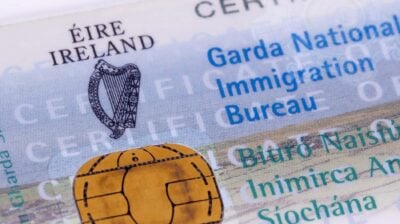
- Your Rights
Regularisation scheme for people seeking asylum in Ireland
This scheme allows some people seeking asylum in the International Protection process to apply for legal residence in Ireland.
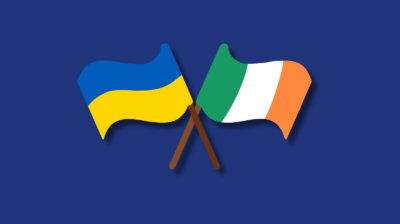
spunout resources for Ukrainians in Ireland
Arriving in a new country can be an extremely challenging time, especially if you have arrived as a refugee. To help support you, we have created s...
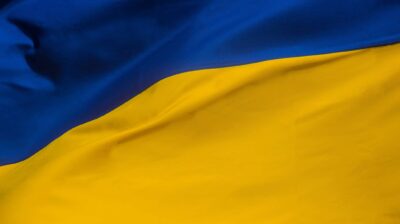
Healthcare for Ukrainian Refugees in Ireland
If you have arrived in Ireland as a Ukrainian refugee, you can access the same public healthcare services as people who live in Ireland. Health ser...
Our work is supported by


- PHOTOGRAPHY
Life With the Irish Travellers Reveals a Bygone World
One photographer spent four years gaining unprecedented access to this close-knit community.
When Birte Kaufmann first encountered Irish Travellers, she was on a trip with friends in the Irish countryside and saw a girl and her little brother running toward a roadside camp. The caravans and horses reminded Kaufmannn, who is German, of the Romany camps she had seen elsewhere in Europe, but the people looked intriguingly different.
Who were they, she wondered, and how could she delve deeper into their culture?
"People said, You'll never get an insight into that community—forget about it," Kaufmann recalls of sharing with Irish friends her burgeoning plans to photograph the close-knit Travellers.
An ethnic minority in Ireland , the Travellers have lived on the margins of mainstream Irish society for centuries. Efforts have been made to incorporate the nomadic group into mainstream culture by settling them into government housing and enforcing school attendance. But even living among "settled people," they face ongoing discrimination.
Kaufmann describes theirs as a parallel world, where deeply-rooted gender roles and an itinerant lifestyle have kept them apart from the broader Irish community even as their freedom to roam has become increasingly curtailed.
To gain access to the community, Kaufmann first attempted to engage through human rights groups that work with them—to no avail. So she decided to do it "the hard way," she says. She had heard about a “halting site”—walled areas on the outskirts of large towns that contain houses as well as spaces for caravan parking—and on her next trip to Ireland, she simply showed up.
She was met by barking dogs, one of which bit her. A young woman approached, speaking English with an accent so thick that Kaufmann had trouble comprehending. Undeterred, she decided to lay her cards on the table. "I was really honest. I told [her] I was coming from Germany , where we don't have our own traveling community, [that] I knew who they were and was interested in how [they live]," Kaufmann recalls.
The young woman "was totally surprised, but finally they invited me for a cup of tea. I was sitting in a caravan with her grandfather. I asked them if I could come back and stay with them." Kaufmann says they chortled, as if to say, Yeah, right.
When she next returned from Germany, it was with a camper van of her own, so that she could stay alongside the extended family clan that would become the focus of her project. "I knew it was a high risk," she says, “but I gave them some pictures I had taken in the caravan of the grandfather. And they said, 'Ok. Now you're here. We have the images. One cup of tea. Now go. We are busy.'"
You May Also Like

How queer and nonconformist creators are redefining what it means to be Nigerian

What is queer Indigenous art? A conversation between two leading Nigerian creatives

The 'Hello Girls' helped win WWI—why was their service overlooked?
As a photographer, and especially as a woman, Kaufmann was something of a novelty given the strictly defined gender roles of the Traveller community—men tend to the horses and livestock, women to home and family. Girls marry young and only with the blessing of their parents. Men don’t typically speak to women in public.
She slowly gained their trust to the point that one of the family members—a young mother who took a particular shine to her and was perhaps even amused at her struggle to understand what they were saying—began teaching her Gammon, their unwritten language.
"She tried to teach me words to say if the guys are being rude," she says. "And then the father started telling me what I should say. [They] tried to make me feel more comfortable." Her knowledge of words selectively and seldom shared with outsiders demonstrated to other Travellers that one of their own had trusted her enough to share.
And in turn, understanding how they communicate with each other helped her get past the sense of feeling unwelcome and deepened her appreciation of their differences. "At first [the talk] sounds really rough," she says. "Then there was this point at which I realized it was their language. They don't really call anyone by name. It's 'the woman over there,' 'the man over there,' 'the child,'" she explains. "It's not personal, [but] at first it sounds very rude.”
Kaufmann made multiple visits to the family over the course of four years, eventually living with them. The men gradually accepted her and allowed her to photograph them hunting and trading horses at a fair. She was able to blend into the background and photograph them as an unobtrusive observer of their everyday lives—lives, she says, that are filled with a lot of idle time. As Ireland becomes less agrarian, the Travellers’ traditional work as horse traders, farm laborers, tinsmiths, and entertainers has become more scarce.
"The older generations can't read or write," Kaufmann says, "but they have their own intelligence. On the one hand life was so sad and boring because everything their lives were stemming from wasn't there anymore. On the other hand there was this freedom—they live their lives in their own way."
And then, she says, she found herself taking no photographs at all. "One of the boys who really didn't like to be photographed said, 'Do you know what's really strange with Birte now? She's here and she's not really photographing anymore.'"
And that's when she knew her project was done.
Birte Kaufmann's project on the Travellers is now available as a book . You may also see more of Birte Kaufmann's photographs on her website .
Related Topics
- PEOPLE AND CULTURE
- FAMILY LIFE
- PHOTOGRAPHERS
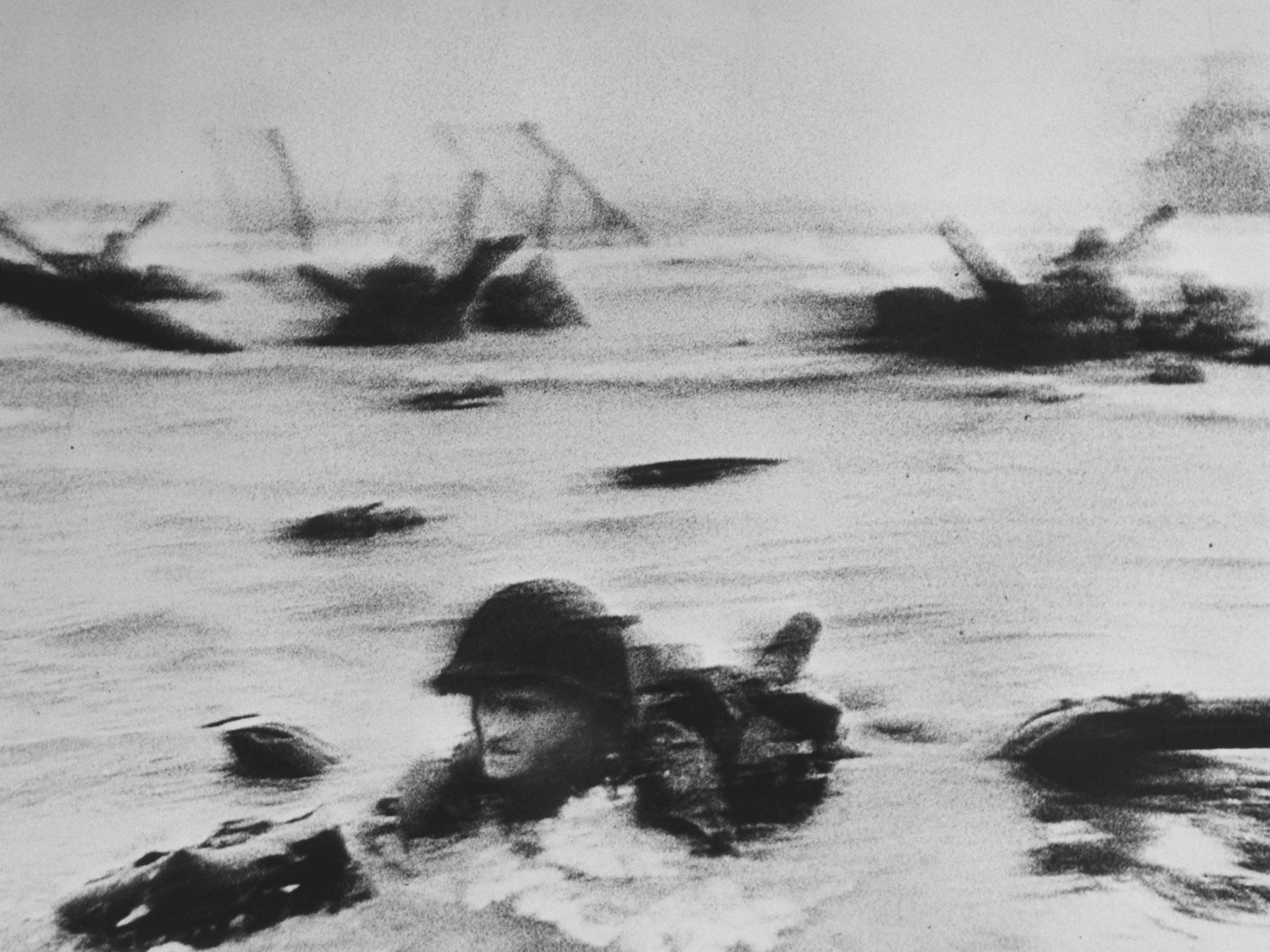
The harrowing story of the photo that defined D-Day—and how it was almost lost

A man’s world? Not according to biology or history.

Why do so many virtual assistants have female voices?

Barbie’s signature pink may be Earth’s oldest color. Here’s how it took over the world.

Meet the 5 iconic women being honored on new quarters in 2024
- Environment
- Paid Content
History & Culture
- History & Culture
- Terms of Use
- Privacy Policy
- Your US State Privacy Rights
- Children's Online Privacy Policy
- Interest-Based Ads
- About Nielsen Measurement
- Do Not Sell or Share My Personal Information
- Nat Geo Home
- Attend a Live Event
- Book a Trip
- Inspire Your Kids
- Shop Nat Geo
- Visit the D.C. Museum
- Learn About Our Impact
- Support Our Mission
- Advertise With Us
- Customer Service
- Renew Subscription
- Manage Your Subscription
- Work at Nat Geo
- Sign Up for Our Newsletters
- Contribute to Protect the Planet
Copyright © 1996-2015 National Geographic Society Copyright © 2015-2024 National Geographic Partners, LLC. All rights reserved

The long road towards acceptance for Irish Travellers
The Irish Traveller community is fighting for official recognition of its ethnic identity and for a way of life.
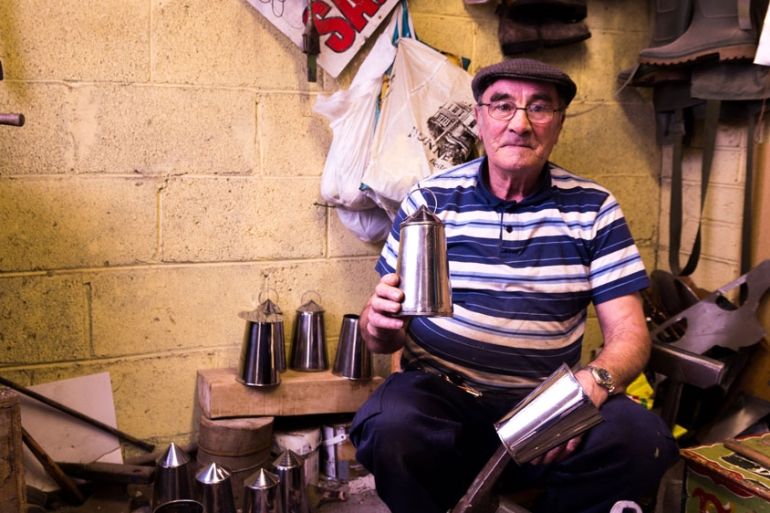
Avila Park, Dublin, Ireland – In a wooden shed in his back garden, James Collins sits on a low stool hammering out the final touches on a billy can. At 68, he is one of only two remaining traveller tinsmiths in Ireland.
Above the clutter of well-worn tools and scrap sheet metal hang a dozen or so other cans. Nowadays, he says, there’s precious little demand for his trade, and he largely continues it as a hobby, occasionally selling some of his work at vintage craft fairs.
Since the introduction of plastic homeware in the 1960s and 1970s, tinsmithing – traditionally dominated by the historically nomadic community known as Travellers – has effectively died out. Even the block tin, James originally used, is no longer available.
“It’s more difficult to work with,” he says, holding up a gleaming aluminium can. “You can’t make what you want to make out of it because you have to use solder and that won’t take solder.”
READ MORE: Ballinasloe Horse Fair – An ancient Irish tradition
James was raised on the road in the Irish midlands, a traditional upbringing unknown to most Travellers today. “I was bred, born and reared on the road,” he says, “but the young lads today wasn’t. They all grew up in houses and went to school and all this craic. I never got any education, never went to school in my life.”
Until his late 20s, when he settled in Avila Park, a housing estate for Travellers on the outskirts of Dublin, the Irish capital, James plied his trade for farmers, smithing and repairing buckets. “It never goes out of your mind; you’re always thinking, thinking the whole time about the road,” he says.
In comparison, younger generations have little interest in traditional crafts or the travelling lifestyle – James’ children and grandchildren don’t know how to harness a horse, for example. And anti-trespass legislation introduced in the early 2000s, which was used to disperse encampments by the side of roads or on council-owned land, made a nomadic existence increasingly difficult.
Yet, even as the distinct traditions of Irish Travellers seem to fade into the past, the battle for official recognition of their identity continues.
![travelling community in ireland Avila Park is a housing estate for Travellers on the outskirts of Dublin [Ruairi Casey/Al Jazeera]](https://www.aljazeera.com/wp-content/uploads/2017/02/455a80191a7f42cba1122a7ca8039da2_18.jpeg)
The search for recognition
Unlike the United Nations and the United Kingdom, Ireland does not recognise Travellers as a separate ethnicity from the non-Traveller community. For decades, human rights organisations and Traveller advocacy groups have been seeking this recognition, but to little avail.
However, on January 26, a parliamentary committee established to investigate the issue stated unequivocally that “Travellers are, de facto, a separate ethnic group”.
“This is not a gift to be bestowed upon them, but a fact the state ought to formally acknowledge,” it further said.
The committee report urged the Taoiseach, Ireland’s prime minister, or the minister for justice to give a statement to the Dail, the Irish parliament, acknowledging this at the earliest opportunity.
This development was welcomed by members of the Travelling community, although some remain cautious in their optimism. It would not be the first time an Irish government has reneged on such commitments – a 2014 parliamentary report made the same recommendation, which was never acted upon.
A history of deprivation and discrimination
An examination of the almost 30,000 Travellers in the Republic of Ireland shows a staggering level of deprivation completely at odds with the non-Traveller community. Another 4,000 to 5,000 Travellers live in Northern Ireland, in a similar situation.
Around half of Travellers have no secondary education and only 1 percent have attended university, according to Pavee Point, a group fighting for the rights of Travellers.
WATCH: Irish travellers facing discrimination
Some 84 percent of Travellers are unemployed, while suicide rates are almost seven times higher than among settled people. A 2010 study found that life expectancy was 15 years lower among men and 11 years lower among women when compared with their settled counterparts.
Discrimination against Travellers remains endemic at social and institutional levels. Being denied entry to businesses is a common occurrence and many try to hide their background when applying for jobs, fearing that potential employers will not hire them.
“Symbolically it would have a profound impact on our collective sense of identity, self-esteem and confidence as a people,” says Martin Collins, the co-director of Pavee Point, on the recognition of Traveller ethnicity.
“Some travellers have internalised [racism] and end up believing that they are of no value, they are of no worth … So that’s the impact. That’s the outcome of both racism and your identity being denied.”
A culture denied
It was a 1963 government report, the Commission on Itinerancy, that has set the tone for the state’s attitude towards Travellers ever since, says Sinn Fein Senator Padraig MacLochlainn, the first person from a Traveller background to be elected to the Irish parliament.
![travelling community in ireland Traveller rights groups have been seeking recognition for their community [Ruairi Casey/Al Jazeera]](https://www.aljazeera.com/wp-content/uploads/2017/02/c4d9036a96ee4f959ac072230476ad82_18.jpeg)
The Committee on Itinerancy ‘s terms of reference defined Travellers as a “problem”, whose social ills were “inherent in their way of life,” and outlined the goal of “promot[ing] their absorption into the general community”.
No Travellers were on the committee, nor were they consulted for its report.
“Our people and our state denied their history and decided that they were criminals and they needed to be immersed in with the rest of us,” says MacLochlainn.
This refusal to acknowledge the community’s rich cultural history – notably their own language, Cant, and significant contributions to Irish traditional music – persists today.
Traveller culture is frequently portrayed in the media as separate and distinct, MacLochlainn says, but almost always in negative terms, in exploitation TV shows such as My Big Fat Gypsy Wedding and exposes on Traveller criminality.
“You clearly accept them as a distinct group – why are you making these programmes if you don’t? If they’re a distinct group, could you do it now in positive terms?
“When it comes to negative characterisations, the media, the establishment … in Ireland are more than happy for them to be characterised in negative terms,” the senator says.
Behind James’ shed in Avila Park, traditional and modern Traveller accommodation sit side by side. A wooden barreltop caravan, washed green with blue and red embellishments, sits between two mobile home units, where his younger relatives stay.
Only one has both electricity and running water, which were installed by the family. Power is provided from the house by a yellow cable, wound loosely around plastic drainpipes and holes in its pebbledash exterior.
An early morning fire in a nearby prefabricated unit just a few weeks before offered a bleak reminder of the danger these makeshift electrical fixtures pose. A neighbour raised the alarm and the young couple inside escaped before their home was reduced to a charred husk.
Children burned to death
This near disaster has reminded some people of a fire in the south Dublin suburb of Carrickmines more than a year ago, which continues to cast a shadow over relations between the Traveller and the settled communities.
In the early hours of October 10, 2015, a fire ripped through a halting site killing 10 people, including five children, from two families – the Lynch and Gilbert family and the Connors. The youngest victim was five months old. It was one of the deadliest fires in the history of the Republic of Ireland.
Social workers had raised concerns about the site’s substandard prefabricated units to authorities in the months before the fire, but no action was taken. The blaze and its aftermath would, for many, become an example of the pervasive discrimination Travellers face in Ireland today.
Three days after the fire, some locals blockaded land marked for temporary accommodation for the surviving members of the Connors family, preventing construction vehicles from entering. Though the obstruction was condemned by then Environment Minister Alan Kelly and several Traveller groups, the protesters were successful.
OPINION: Catholic Ireland’s saints and sinners
On October 21, one day before the last victims were buried, the county council announced that the Connors family would instead be resettled on a reclaimed dump on council land in a nearby suburb. At the time of writing, the family remain in that location.
Alongside many expressions of grief on social media after the fire were comments highlighting the discrimination towards travellers in Irish society.
On one popular news site, a comment simply wishing that the victims rest in peace received hundreds of thumbs down votes from other readers. “Hundreds of Irish people gave a thumbs down to an expression of sympathy for children who were burned to death,” says MacLochlainn. “That’s terrifying; that’s absolutely terrifying.”
In response to the tragedy, local authorities across the country conducted fire safety audits at Traveller accommodation sites. “All we got was a few fire alarms, a few fire blankets and some carbon monoxide alarms,” says Collins, of Pavee Point.
“That’s like re-arranging the chairs on the Titanic. That’s totally inadequate. These sites need to be completely redeveloped [and] refurbished, because the sites are just inherently dangerous. Getting a few fire alarms and a few hoses will not rectify the situation.”
For Collins, the long overdue recognition of Traveller ethnicity is an important milestone, but as the Carrickmines example shows, a commitment to materially improving the lives of Travellers is also necessary if they are to be truly equal in their own country.
![travelling community in ireland Traveller culture is frequently portrayed negatively in the media [Ruairi Casey/Al Jazeera]](https://www.aljazeera.com/wp-content/uploads/2017/02/20e4db51b2eb41a391ea190a642d302e_18.jpeg)
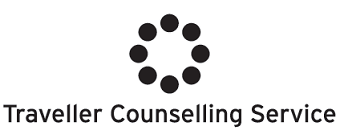
"I feel better in myself after talking to the counsellor"
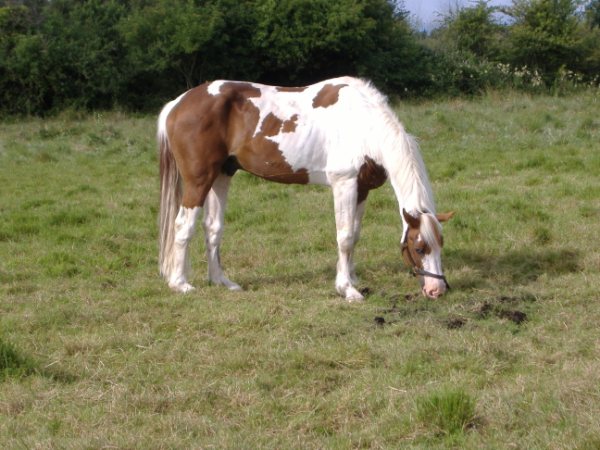
Traveller Culture

The situation of Travellers is a difficult one, with the Traveller community’s traditional way of life, nomadism and distinctive economy affected by rapid economic and social change. These difficulties are characterised by the following:-
- Poor living conditions; many in unauthorized sites and finding it difficult to obtain either sites or accommodation of reasonable quality in acceptable locations.
- Ill-health; evidenced in life expectancies which remain typically ten years less than the settled population.
- Limited educational achievement; a reflection of the lack of opportunities, with few Travellers progressing to second level (less than 3% completing) and only a handful individuals reaching third level.
- Unemployment; difficulties in obtaining employment, coupled with the erosion of the Traveller economy, which makes their labour market situation very difficult. It was estimated that at least 45% of Travellers have no meaningful work.
- Discrimination; Travellers constitute the largest single category of discrimination reported to the responsible agencies.
- Identity Issues; problems of identity arising from their minority status.
Mental Health Training
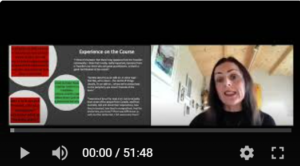
The launch of the Mincéir Mental Health training programme took place on 15th December 2021. View the launch here ; view the evaluation report here .
Course participants can log into the training page here .
For more information please contact [email protected].
Conference 2019
In April 2019 The Traveller Counselling Service in conjuction with the Traveller Mediation Service and Exchange House Ireland ran a Conference exploring The Impact Of Inter-family Conflict on Traveller Mental Health.
A conference report will available in the coming weeks

Landline: 01 868 5761 Mobile: 086 308 1476 Email: [email protected]
Latest News

View our Leaflet
Click here to download or print our leaflet!
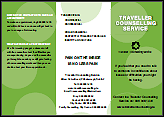
This service is proudly supported by
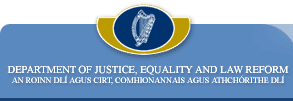
“As manager of the organisation, I have seen the impact since the local counselling service was set up some years now. The taboo that Travellers always had in relation to counselling is no longer there.”
“Our clients have said that they do feel the benefit of using the service for a number of reasons. Before they did not understand counselling or what it was for, and to be able to talk to someone about their problems and issues, whether it be drug related or not, in a "safe and confidential environment" is key.”
(Jim O’Brien, Manager, Bray Traveller’s Community Development Group Ltd.)
Privacy Overview

- What is ITM?
- Key Achievements
- Irish Travellers
- ITM Members
- Become a Member
- Accommodation – Key Issues
- Traveller Homes Matter Files
- Anti Racism & Interculturalism – Key Issues
- Traveller Ethnicity
- Anti Traveller Racism
- Traveller Pride
- Education – Key Issues
- The Yellow Flag Programme
- ITM submissions
- Joint Oireachtas Committee on Key Issues Affecting Travellers
- Key Reports
- Newsletters
- ITM Notice Board
- ITM Strategic Plan 2023-2027
- Annual Reports
- Sign up to our Newsletter
- Support Our Work

Welcome to The Irish Traveller Movement
The irish traveller movement ( itm ) is a national membership organisation representing travellers and traveller organisations across ireland since its establishment in 1990. we work collectively to represent the views of travellers and to develop policies, actions, and innovative programmes to bring about change for travellers in ireland. the irish traveller movement holds strongly to the principle of solidarity and is a partnership between travellers and non-travellers committed to seeking full equality for travellers in irish society..

Policy and Political
Hate Speech and Hate Crime Law – December 6th 2023

- Reader view
Joint Committee on Key Issues facing the Traveller Community publishes final report

2 Dec 2021, 10:50
The Joint Committee on Key Issues affecting the Traveller Community has published its final report into inequalities faced by the Traveller Community, today Thursday December 02.
The report examines the stark inequalities of opportunity and outcome faced by the Traveller Community in the areas of health, education, employment and accommodation and recommends policy directions to mitigate the effects on the Traveller Community.
The Committee met with a large number of stakeholders including Ministers and Government department officials, state agencies, NGOs and advocacy groups and most importantly, representatives from Traveller organisations, both national and local.
It is the Committee’s view that Traveller voices must be central in any examination of the issues faced by them, and that no solutions will be found for the serious inequalities faced by Travellers without the engagement and collaboration of the Traveller community themselves.
Launching the report, Committee Chairperson Senator Eileen Flynn said: “It gives me great pleasure, as someone who comes from Labre Park, to be able to chair this committee and open up those opportunities to many more Travellers. Travellers are one of the most studied groups in society. Over the years there have been numerous reports and studies produced which have highlighted the extreme difficulties and challenges faced by the Traveller community. Unfortunately, it is clear that these have not succeeded in improving conditions in Travellers’ lives.”
“The Committee visited several Traveller accommodation sites around the country, to allow members to see for themselves the conditions Travellers are forced to endure, and to meet with residents and hear their experiences first-hand. Following the publication of the landmark No End in Site report into the Spring Lane halting site in Co Cork by the Ombudsman for Children’s Office – it is clear that such living conditions for Travellers can no longer endure.”
“Deficient and substandard living conditions precarious accommodation and homelessness have severely detrimental effects on both mental and physical health, and brutally impact Traveller children’s ability to thrive in education. Lower educational outcomes have a damaging impact on employment opportunities. Chronic unemployment causes stress and has negative consequences for mental health. These issues will not be solved in isolation and must be tackled through a whole of Government and a whole of society approach.”
“Despite the dire conditions on the sites we visited, the Committee was particularly struck by the pride and care taken in the homes on site. The Committee offers a special thanks to the residents for welcoming them into their homes and sharing their stories and experiences.”
“Travellers were particularly impacted by the pandemic due to their unsuitable living conditions. Living in overcrowded conditions prevented many Travellers from self-isolating when required to do so by public health guidelines. The lack of access to running water also made it difficult to comply with guidelines on hand hygiene. It took Covid-19 for some families to get water and portable toilets as a temporary emergency measure. There should be an immediate report prepared in relation to the effects of the Covid-19 pandemic on the Traveller community, and appropriate actions should be taken to address all concerns raised in this report.”
“I can’t stress this enough, the recommendations must be implemented. It is no exaggeration when I say that if these recommendations are implemented, they would create opportunities for Travellers that were not there before. This report will mean nothing if the recommendations are not implemented. Most importantly, it would mean a loss of hope for many Travellers who need those actions to be implemented as soon as possible.”
The full report and its recommendations is available to read on the Committee’s webpage.
Media enquiries
Áine McMahon Houses of the Oireachtas Communications Unit Leinster House Dublin 2
+353 (0) 1 618 3437 +353 (0) 85 800 7312
[email protected] [email protected] Twitter: @OireachtasNews

Skip navigation
- Births, Deaths & Marriages
- Crime and Justice
- Social Conditions
- Information Society
- Housing and Households
- Labour Market
- Agriculture
- Building and Construction
- Digital Economy
- Enterprise Statistics
- International Enterprises
- People in Business
- Retail and Services
- Small and Medium Enterprises
- Technology and Innovation
- Tourism and Travel
- International Accounts
- National Accounts
- Government Accounts
- External Trade
- Key Economic Indicators
- IMF Summary Data Page
- Agri-Environment
- Ecosystem Accounts
- Environment Accounts
- Water and Waste Water
- General Statistical Publications A-Z of Releases and Publications Hubs & Dashboards
- Trust & Transparency
Census of Population 2016 – Profile 8 Irish Travellers, Ethnicity and Religion
- Irish Travellers - Demographics

Comparison of Irish Traveller population to general population
The total number of usually resident Irish Travellers enumerated in April 2016 was 30,987 representing 0.7 per cent of the general population. This figure was an increase of 5.1 per cent on the 2011 figure of 29,495. (Note: all analysis is based on the usually resident population. The corresponding De Facto figures in 2016 and 2011 were 31,075 and 29,573 respectively).
The population pyramid below highlights how the structure of the Irish Traveller population is very different to that of the general population, with a broad base at the younger ages and reducing sharply at higher ages. Nearly 6 in 10 (58.1%) Irish Travellers were under 25 years of age (0-24) compared to just over 3 in 10 (33.4%) in the general population.
There were 451 Irish traveller males aged 65 or over representing just 2.9 per cent of the total, significantly lower than the general population (12.6%); the equivalent figures for females were 481 persons which represented just 3.1 per cent of the total, compared with 14.1 per cent for the general population.
Interactive table: StatBank Link E8001
It's a Fact
- 3% - The percentage of Irish Travellers who were aged 65 or over in 2016. The equivalent rate for the general population was 13.3%
- 39.7% - The percentage of Irish Travellers who were aged 14 or under in 2016. The equivalent rate for the general population was 21.4%
County analysis
There were significant differences in the size of the Irish Traveller community across the administrative counties.
As in 2011, Galway county had the highest number of Travellers with 2,647 persons, an increase of 6.7 per cent on the 2011 figure 2,481. This was followed by South Dublin with 2,208 persons, down 1.5 per cent on 2011.
Travellers were more urbanised than the general population with nearly 8 in 10 (78.6%) living in cities or towns (1,500 or more), compared with 62.4 per cent of the total population.
Irish Travellers in cities and towns
Dublin city and suburbs had the largest number of Irish Travellers with 5,089 persons. This was followed by Galway city and suburbs with 1,598 persons and Cork city and suburbs with 1,222.
Of the towns with 1,500 or more persons, Tuam had the highest number of Irish Travellers with 737 persons, followed by Longford with 730 persons.
Navan, Mullingar, Dundalk and Ballinasloe all had 500 or more Irish Travellers in 2016.
Interactive table: StatBank Link E8002
- 78.6% - The percentage of Irish Travellers in urban areas. The comparable rate for the general population is 62.4%.
Irish Traveller marital status
Figure 1.3 presents marital status by age. Among the general population 5.8 per cent of 15-29 year olds were married, compared with 3 in 10 (31.9%) of the Irish Traveller population. There were 201 married 15-19 year olds, down from 250 in 2011.
The divorce rate among Irish travellers was 2.2 per cent, compared with 4.7 per cent for the general population. The percentage of Irish travellers who were separated had fallen in 2016 to 10.4 per cent, down from 12.1 per cent in 2011.
Irish Traveller households
Nationally there was a 12.3 per cent increase in the number of Irish Traveller households (defined as households containing at least one Irish Traveller), rising from 7,765 in 2011 to 8,717 in 2016.
Of these 7,424 were classified as family households representing (85.2%) compared with 70.2 per cent of the general population.
Figure 1.4 illustrates other differences between Irish Traveller households and the general population. There were more than 3 times as many multiple family Traveller households (4.2% compared with 1.3%), more lone parents with children (17.9% compared with 11.7%) and fewer married couples without children (8.9% compared with 15.7%). Just over 1 in 10 (11%) Irish Travellers were living in one person households compared with almost 1 in 4 (23.5%) in the general population.
Household size
Irish traveller households comprising of a married couple with children had an average of 5.3 persons per household compared with 4.1 for the general population.
Figure 1.5 illustrates how there are proportionally fewer one and two person Irish Traveller households compared with the general population. More than 1 in 4 Irish Traveller households had 6 or more persons compared with less than 1 in 20 households in the State overall.
Interactive table: StatBank Link E8047
- 8,717 - The number of Irish Traveller households (containing at least one Irish Traveller)
- 31.9% - The percentage of 15-29 year old Irish Travellers who were married
Fertility among female population
Among Traveller women aged 40-49 (the age by which women have typically completed their fertility) 13.3 per cent had not given birth to a child - compared with 18.3 per cent of women generally. Nearly half had given birth to 5 or more children, in stark contrast to just under 1 in 20 (4.2%) of women overall in this age group.
Interactive table: StatBank Link E8044
- 4.2% - The percentage of Irish Traveller Households with 9 or more persons in 2016
- 0.1% - The percentage of General population Households with 9 or more persons in 2016
- Go to the next chapter: Irish Travellers - Socio-economic Aspects and Housing
- Infographic
- Irish Traveller - Infographic
- Irish Travellers - Socio-economic Aspects and Housing
- Religion - Religious Change
- Religion - Roman Catholicism
- Religion - Other Christian
- Religion - Non-Christian
- Religion - No Religion, Atheism and Agnosticism
- Background Notes
- Contact Details
Why you can Trust the CSO
Learn about our data and confidentiality safeguards, and the steps we take to produce statistics that can be trusted by all.
Central Statistics Office Skehard Road, Cork T12 X00E, Ireland
- © 2024
- Copyright and Re-use Policy
- Freedom of Information
- Accessibility
- Data Protection & Transparency
- Privacy Statement
You can count on a rewarding career with the CSO.
Learn about our variety of roles and the benefits of working with the CSO.
- Skip to main content
- Keyboard shortcuts for audio player
Hidden World Of Girls
For traveller women in ireland, life is changing.
The Kitchen Sisters
Second of a yearlong series

Helen Connors (right), who is part of a Traveller family, says she started school when she was 4 years old. But the community didn't take Traveller girls very seriously — and she says she was called a "knacker" and a "pikey." Nikki Silva hide caption
Helen Connors (right), who is part of a Traveller family, says she started school when she was 4 years old. But the community didn't take Traveller girls very seriously — and she says she was called a "knacker" and a "pikey."
Travellers, "the people of walking," are often referred to as the Gypsies of Ireland. Mistrusted for the most part, their traditions and lifestyle are not well understood within the larger culture. Historically, they were nomads who moved in caravans and lived in encampments on the side of the road. Their tradition as "tinkers" or tinsmiths, and as the breeders and traders of some of Ireland's best horses, goes back hundreds of years.
As times change in Ireland and the notions of private and public space change and contract, the culture no longer accepts the Travellers on public and private lands and has begun to create "halts" where they can settle.
Helen Connors, 21, lives in Hazel Hill, a new government experiment in Traveller housing on the lower slopes of Dublin Mountain, with her husband and two children.
"Travellers got their name because they're so fond of traveling around the world in a caravan," she says. "They'd have their wagons and their horses. You'd see them along the roadside. You could be in Dublin today; you could be in Cork tomorrow. That's how Travellers got their name. We call you 'settled people.' "
"Travelling girls don't really mix much with settled girls," says Shirley Martin, a 23-year-old mother of three. "The way of living, caravans, by the side of the road. A come and go thing. My family is a Travelling family."
Life In School Hard For Travellers
There are similarities between Traveller and Romany Gypsy culture, but Travellers do not define themselves as Romany, says Mary Burke, associate professor of Irish literature at the University of Connecticut.
For many generations, Travellers -- the nomadic, indigenous Irish minority -- provided services to an Ireland that was predominantly agricultural: seasonal farm labor, tinsmithing, horse-trading, hawking, music and entertainment.

The Irish government is experimenting with housing for Travellers — the Gypsies of Ireland — on the lower slopes of Dublin Mountain. The houses are called "halts." Today, the majority of Travellers either live in houses permanently or live in houses at certain times of the year. Gerry O'Leary hide caption
The Irish government is experimenting with housing for Travellers — the Gypsies of Ireland — on the lower slopes of Dublin Mountain. The houses are called "halts." Today, the majority of Travellers either live in houses permanently or live in houses at certain times of the year.
In the early days Travellers moved from place to place with horses and carts. British Romany introduced Travellers to wagons. The wagons were overtaken by caravans, and the caravans were overtaken by mobile homes. But today the majority of Travellers either live in houses permanently or live in houses at certain times of the year.
"But that doesn't mean that prejudice or identity disappear when they settle in houses," Burke says.
Connors started school when she was about 4 years old. She says the community didn't take educating Traveller girls very seriously.
"I didn't learn very much in school because I was bullied a lot," Connors says. "You were a 'knacker' or a 'pikey.' That's all you'd hear every day. You'd be in trouble nearly every day for fighting. If I said to the teacher, 'I can't do that; can I have some help?' she'd say, 'Here's paper; just go down to the back of the class and draw whatever you want.' I had one teacher that said to me, 'Well, a Traveller won't do nothing with their life. Why would you want to know how to read and write? You're going to go off and marry young and have loads of children.' So I was just put down to the end of the class and everyone else was up on top."
Because school in Ireland is set up for kids who live in a house year-round, Burke says, a cultural attitude developed toward Traveller kids who moved around a lot for not being capable of -- or interested in -- learning.
"And that carries over into today," Burke says.
Traveller Girls Marry Young
Traveller families are especially strict with girls, according to Martin.
"Some mothers and fathers is too strict where you wouldn't be allowed to go anywhere," she says. "This is why most Travelling girls get married young, because they want to get away from that. Travelling girls, most of them today would be 16, 17, 18, which will want marriage."
Tell Us Your Stories
This year, NPR and The Kitchen Sisters will bring you stories of girls and the women they become. You can follow them on Twitter by going to @kitchensisters. You can send suggestions to our listener comment line at (202) 408-9576.
We want to hear from you — Click Here For Instructions
The girls travel in a pack, promenading.
"They look very glamorous," Burke says. "Lot's of makeup and heels and long hair."
Terry McCarthy, 16, was recently married.
"When I was 13, I met my husband at a festival," she says. "And the minute I met him, I knew I was in love. I got engaged when I was 15. I had a big do for that. I had a big engagement party. Just went from there then. I got married last month. I had a lovely big huge white dress."
"Whatever you want on your wedding day you have to get," Connors says. "When I got married, I got to design my own wedding dress -- my dream dress. It had a 50-foot train. It was all diamonds and lace. Travellers, too, they have a mini-bride. That's a girl you just dress up to look just like yourself for the day. Your mini-bride has to look like you."
Theresa Hughes and daughter Jennifer have been sewing wedding dresses for Traveller girls for more than 10 years.
"The Travelling community, they come over to us to get their outfits made for going to weddings -- even the mothers and grannies want bling," Theresa says. "Thick pink satin, sequins, beads, glitter. They go all out."
Jennifer shows off a white miniskirt with beads on it.
"I just go all out; I go for extremes," she says. "I kind of used Elvis as an inspiration -- Elvis' white Lycra suit, the flared one that he wears to his last concert."
There is a lot of money involved in Traveller weddings, both in terms of substantial dowry payments and in terms of putting on a good show.
Traveller Women Gain Power
As women age in Traveller culture, they gain power. They often outlive the men. They can become matriarchs in the culture, particularly if they have a large family. And there's prestige attached to being the mother of many.

Shirley Martin, 23, a resident at Hazel Hill, says that Traveller families are especially strict with girls — and that's why they marry young. Nikki Silva hide caption
Shirley Martin, 23, a resident at Hazel Hill, says that Traveller families are especially strict with girls — and that's why they marry young.
"When I was a kid, the Travellers, they used to come around our houses making pots and pans and doing odd jobs," says Paul Connelly, the caretaker of the Hazel Hill halting site. "And in return for that, they may get milk and bread and potatoes. People will not tolerate Travellers living on the side of the roads now. It's dangerous for themselves. The country's trying to get them settled. Set up halting sites and trying to get them to live in them."
Traveller life has changed, Helen Connors says.
"My mother and father had 17 children -- nine boys and eight girls," she says. "Myself, I left school when I was 11, but then I started a trainer course where I learned how to read and write. Then I did a child care course, and I passed all my exams. Now I can read and write what I never learned in school. I learned it by myself. Travellers are speaking up for themselves and being heard."
Produced by The Kitchen Sisters (Davia Nelson and Nikki Silva) in collaboration with Dublin producer, Nuala Macklin; mixed by Jim McKee
Web Resources
- National Social Inclusion Office
- Travellers and Roma
Irish Travellers
Taoiseach Enda Kenny announced formal recognition for Travellers as a distinct ethnic group within the State on 1st March 2017, thus giving formal recognition to Travellers unique heritage, culture and identity.
Travellers are particularly disadvantaged in terms of health status and access to health services. Further information and resources can be found in the tabs to the side.
Health Inequality
The health inequalities that lead to such poor health status are highlighted in the findings of the All Ireland Traveller Health Study (2010) . These include:
- Traveller women live on average 11.5 years less than women in the general population;
- Traveller men live on average 15 years less; and
- the number of deaths among Traveller infants is estimated at 14.1 for every 1,000 live births compared to 3.9 for every 1,000 live births among the general population;
- The study also showed that deaths from respiratory and cardiovascular diseases and suicides increased in Travellers compared to the general population.
The strategic direction of Traveller health care is outlined in the Second National Traveller and Roma Inclusion Strategy and Action Plan .
Primary Health Care Projects
We provide support to a range of primary care projects and other initiatives for Travellers. This includes the ongoing work of the HSE Traveller Health Units. The Traveller Health Units work to:
- enhance Traveller health status;
- improve the capacity of mainstream health services to respond to Traveller needs; and
- respond to the social determinants that impact Traveller health.
Primary Health Care for Travellers Projects (PHCTPs) established a model for how Travellers could take part in developing health services. Travellers work as community health workers, and this allows primary health care to be developed based on the Traveller community’s own values and perceptions. This helps to achieve positive outcomes with long-term effects.
For information about the National Social Inclusion Office call: 01 778 5168, or Email: [email protected].

IMAGES
VIDEO
COMMENTS
The Task Force on the Travelling Community (1993-1995) moved to an intercultural paradigm. [47] [49] ... Irish Travellers are known to practice their Catholic faith at holy wells and shrines across Ireland. Travellers were excluded in the past from everyday parish activities in Ireland. Richard O'Brien of the Kerry diocese is a member of the ...
After a long battle, Irish Travellers were finally officially recognised as an indigenous ethnic minority by Ireland's government in early March 2017. Here, Culture Trip takes a look at the origins of the Irish Travelling community and how the historic ruling came about. At the time of the 2011 census, there were around 29,500 Irish ...
Irish Travellers, a traditionally nomadic ethnic minority indigenous to Ireland. Irish Travellers live in Ireland and throughout Great Britain, with smaller communities in Canada and the United States. They have lived as a distinct ethnic group with their own culture, language, and values, distinguished from settled Irish communities, for ...
The Travelling Community is an Irish ethnic minority group. Travellers traditionally lived nomadically, moving from place to place, and followed their family routes around a region in Ireland looking for work and visiting fairs. Over the past few decades Irish Travellers have been forced off the roads due to a number of reasons including ...
Traveller Community in Ireland Statistics. One of the most common misconceptions about Irish Travellers is that the Great Famine between 1845 and 1852 was the reason behind the displacement of the Travellers and parting from the settled Irish population. However, recent research by the Royal College of Surgeons in Ireland proved just how far from the truth this misconception was.
Learn about the history, culture, identity and challenges of Irish Travellers, an indigenous minority group in Ireland. Find out how ITM advocates for Traveller rights and recognition as an ethnic group.
Life With the Irish Travellers Reveals a Bygone World. One photographer spent four years gaining unprecedented access to this close-knit community. When Birte Kaufmann first encountered Irish ...
The number of Irish Travellers living in the State and counted in Census 2022 was 32,949, an increase of 6% from 30,987 in the 2016 census. Irish Travellers make up less than 1% of the population so, for comparison purposes, it can be helpful to use rates per 1,000 of the population. This shows that in Census 2022, six out of 1,000 people in ...
His book stands as a document of an era, and a way of life that is slowly fading into the past. In the 1960s Alen MacWeeney photographed indigenous Irish nomads called the Travellers. Fifty years ...
But Irish Travellers have said they need more action and support to address the discrimination creating a mental health crisis in their community. Specific spending on Traveller mental health is ...
An examination of the almost 30,000 Travellers in the Republic of Ireland shows a staggering level of deprivation completely at odds with the non-Traveller community. Another 4,000 to 5,000 ...
The Irish Traveller community has a long history, with its own traditions, language, practical skills, culture, arts and music, with distinctive patterns of living (e.g. nomadism, keeping of horses) and strong values built around families, care and extended families. One of the biggest influences on Traveller culture is the nomadic lifestyle ...
The project was developed by the National Museum of Ireland in partnership with representatives of Ireland's Travelling community, a group of historians and advertising agency TBWA Dublin.
Profile of the Irish Traveller Community. Travellers are an indigenous minority who have been documented as being part of Irish society for centuries. The group has a long shared history, identity, language and value system, which makes them a distinct group. While Irish Travellers are native to Ireland, they have much in common with European ...
The Irish Traveller Movement (ITM) is a national membership organisation representing Travellers and Traveller organisations across Ireland since its establishment in 1990. We work collectively to represent the views of Travellers and to develop policies, actions, and innovative programmes to bring about change for Travellers in Ireland.
Travellers are one of the most studied groups in society. Over the years there have been numerous reports and studies produced which have highlighted the extreme difficulties and challenges faced by the Traveller community. Unfortunately, it is clear that these have not succeeded in improving conditions in Travellers' lives."
Community Travellers are an indigenous minority who have been documented as being part of Irish society for centuries. The group has a long shared history, identity, language and value system, which makes them a distinct group. While Irish Travellers are native to Ireland, they have much in common with European Travellers and Gypsies.
IRISH TRAVELLER COMMUNITY. The wagon was the traditional home of nomadic Irish Traveller families. Traditionally Travellers burned the wagon that the person died in. In modern times many may not wish to continue to live in the trailer, the home that some nomadic families now live in, if a person dies there. Summary of Essential Practice Points.
ITM is one of a number of not-for-profit organisations in Ireland which provide free legal advice to travellers, alongside Mercy Law Resource Centre, Ballymun Community Law Centre, the Immigrant Council of Ireland, the Irish Refugee Council, the Free Legal Advice Centres, and Northside Community Law Centre. [9]
There were significant differences in the size of the Irish Traveller community across the administrative counties. As in 2011, Galway county had the highest number of Travellers with 2,647 persons, an increase of 6.7 per cent on the 2011 figure 2,481. This was followed by South Dublin with 2,208 persons, down 1.5 per cent on 2011.
For many generations, Travellers -- the nomadic, indigenous Irish minority -- provided services to an Ireland that was predominantly agricultural: seasonal farm labor, tinsmithing, horse-trading ...
The health inequalities that lead to such poor health status are highlighted in the findings of the All Ireland Traveller Health Study (2010). These include: Traveller women live on average 11.5 years less than women in the general population; Traveller men live on average 15 years less; and. the number of deaths among Traveller infants is ...